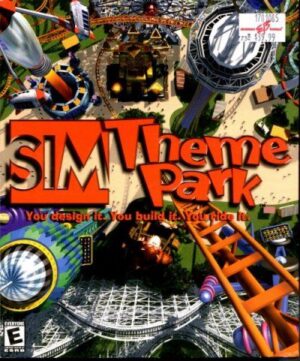Retro Replay Review
Gameplay
This is a two-game release which includes The King of Fighters 2000 and The King of Fighters 2001. Together, they showcase SNK’s evolving team-combat systems and a massive roster of playable fighters. Fans of the franchise will immediately recognize the shift from the Striker System of KOF 2000 to the Tactical Order System introduced in KOF 2001, each adding unique strategic layers to tag-team confrontations.
(HEY YOU!! We hope you enjoy! We try not to run ads. So basically, this is a very expensive hobby running this site. Please consider joining us for updates, forums, and more. Network w/ us to make some cash or friends while retro gaming, and you can win some free retro games for posting. Okay, carry on 👍)
In The King of Fighters 2000, the Striker System allows players to call in an off-screen teammate for combo extensions or to break an opponent’s pressure. While this adds flash and versatility, it can sometimes unbalance matches, especially with higher-level play where Striker spam becomes a factor. Nevertheless, mastering Striker timing and mix-ups rewards players with cinematic juggle opportunities and surprise reversals.
The King of Fighters 2001 refines the formula by introducing the Tactical Order System, which removes expendable Strikers in favor of choosing one character order for the round. This subtle adjustment streamlines resource management and places greater emphasis on team composition. The result is a more balanced competitive environment that still retains the high-octane action and deep combo potential that series veterans expect.
Both games feature robust control schemes, allowing novices to perform flashy super moves with simple inputs while giving advanced players air dashes, custom combos, and precise timing windows for guard cancels. Whether you prefer 3-on-3 battles or shorter 1-on-1 showdowns, the dual releases cater to a wide skill spectrum and keep matches feeling fresh even after dozens of hours of play.
Graphics
Despite being rooted in late-’90s arcade hardware, the sprite work in both KOF 2000 and 2001 remains impressively detailed. Character portraits, win poses, and special move animations are rendered with crisp lines and vibrant colours that pop on modern displays. Background stages brim with atmosphere—urban streets, ancient temples, and industrial complexes each come alive with subtle animations and parallax scrolling.
Special effects such as fireballs, lightning strikes, and super move cinematics are smooth and impactful, thanks to generous frame counts and careful layering. In KOF 2001, SNK introduced more elaborate splash screens and dynamic camera zooms during high-level super arts, lending a sense of grandeur to every finishing blow. The transition between rounds and the familiar “KOF” logo animations reinforce the arcade aesthetic.
While the games lack modern shaders or 3D models, the pixel art style has aged gracefully. Color palettes remain consistent, and there’s minimal flicker or slowdown even when the action heats up. On compatible ports, you may also find scanline filters or widescreen modes that pay homage to CRT monitors without compromising sprite fidelity.
Story
As with many entries in The King of Fighters franchise, narrative takes a backseat to combat—but there’s still a compelling throughline for fans of the cast. In KOF 2000, the enigmatic NESTS cartel continues its clandestine experiments, pitting teams of heroes against genetically enhanced foes. Each arcade route culminates in a classic boss encounter that fuels the overarching conspiracy storyline.
The King of Fighters 2001 shifts focus to the aftermath of the Orochi Saga, introducing new characters and secret organizations that keep the tournament’s stakes high. While cutscenes are brief, they’re interspersed with team-specific dialogue and dynamic ending sequences that reward players for mastering each character’s path. These bite-sized narrative beats help contextualize rivalries and alliances without bogging down the action.
Both titles feature multiple endings based on team selection and performance, offering replay value to those curious about each fighter’s fate. The light storytelling also makes these games accessible to newcomers who might be intimidated by deep lore, while still providing enough connective tissue for series purists.
Overall Experience
Bundling The King of Fighters 2000 and 2001 delivers exceptional value, especially for players seeking classic 2D fighting experiences. The dual release not only doubles your content—rosters well over 60 characters across both games—but also highlights SNK’s willingness to iterate on core mechanics from one installment to the next. This makes it a fascinating package for both retrospective players and those discovering the series for the first time.
Local multiplayer remains the heart of the experience, with 3-on-3 team battles providing intense showdowns in living rooms or at small tournaments. If your chosen port supports online play, you can even test your Striker combos or Tactical Order strategies against distant rivals. The learning curve is approachable, yet the depth ensures that players committed to mastering the systems will find endless room for improvement.
Replayability is further bolstered by hidden characters, secret teams, and challenge modes that push your execution skills to the limit. Whether you’re chasing perfect runs in Time Attack or trading blows in Versus Mode, the twin titles deliver a satisfying blend of immediacy and depth. For anyone interested in the evolution of team-based 2D fighters, this collection is a must-own.
Ultimately, The King of Fighters 2000/2001 stands as a testament to SNK’s arcade pedigree. It balances nostalgic sprite artistry with robust mechanics, ensuring that both casual brawlers and competitive enthusiasts will walk away pleased. This two-in-one package remains a standout entry in the long-running series and a solid addition to any fighting-game library.
 Retro Replay Retro Replay gaming reviews, news, emulation, geek stuff and more!
Retro Replay Retro Replay gaming reviews, news, emulation, geek stuff and more!




Reviews
There are no reviews yet.